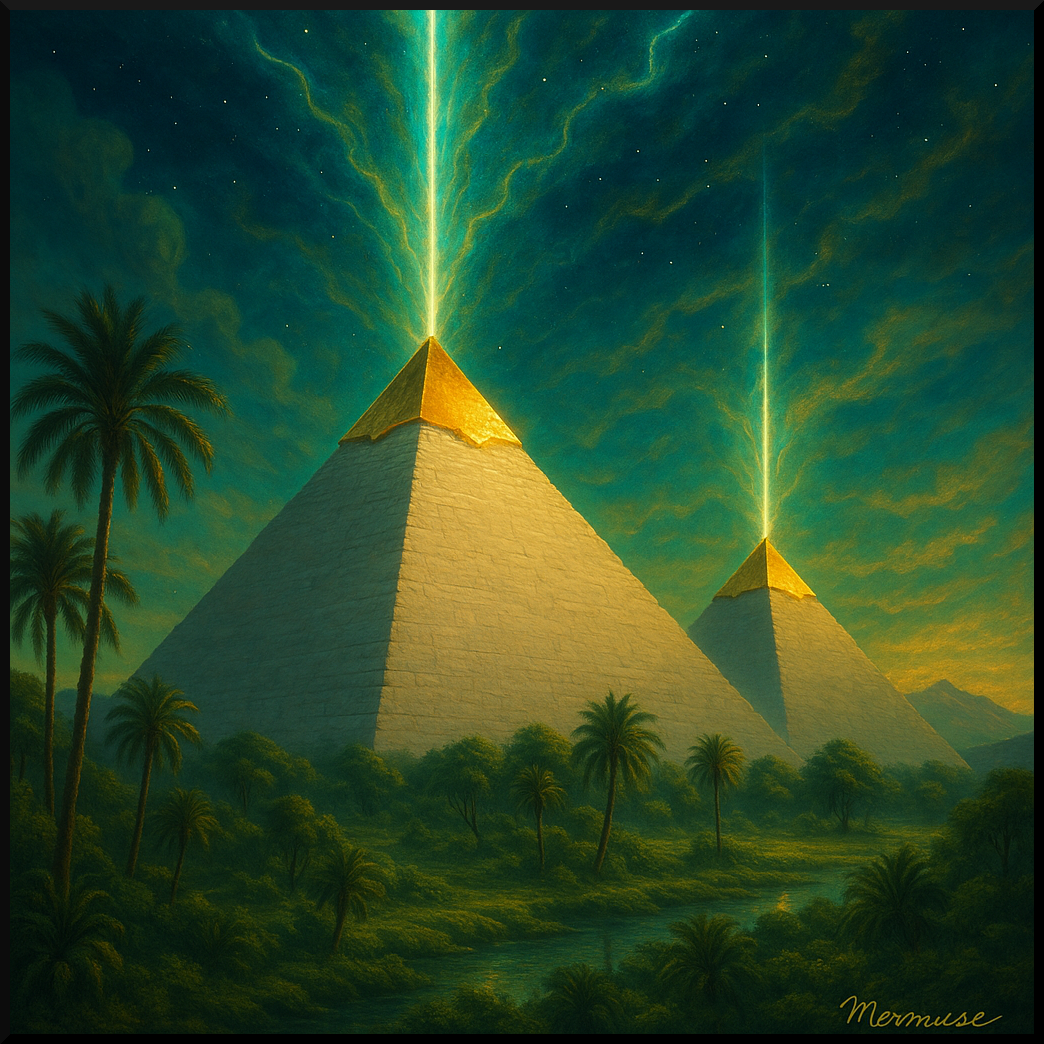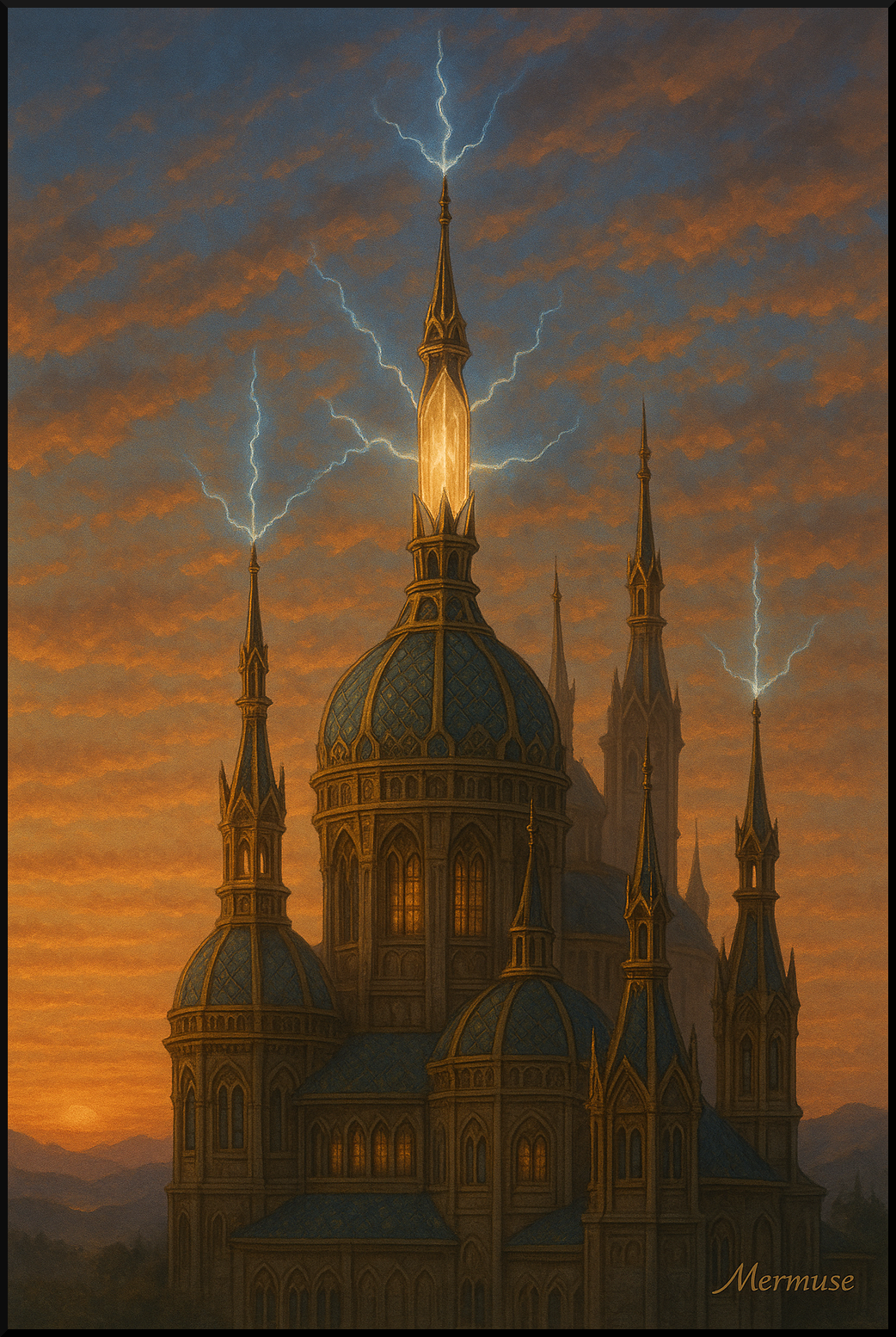In the mythic memory of civilizations across the world, there lingers a common thread: an age of balance, peace, and mild climate, a Golden Age when nature and mankind lived in harmony. Could it be that during these periods, storms were not the chaos-inducing forces they are today? This question proposes the possibility that the ancients harnessed a form of natural energy often called Aether, and in doing so, exerted influence over atmospheric conditions. This idea, though speculative, draws strength from the remarkable consistency in myths that describe a world before the deluge, before the cataclysm, as calm and temperate, free from the violent storms that define our modern age.
In Hindu cosmology, the Satya Yuga, the first and purest of the four great ages, was marked by global equilibrium. Rain came in proper measure, crops flourished, and seasons were stable. Similarly, Greek mythology refers to the Golden Age under Kronos, a time when humanity lived without toil or suffering, and the Earth offered her bounty freely, uncoaxed by harsh weather. The ancient Chinese texts speak of the rule of the Yellow Emperor as a time of climatic harmony, when elemental balance reigned, and disruptions in weather were seen as indicators of moral decay or technological imbalance.
Egyptian temple inscriptions, particularly in Dendera and Edfu, cryptically reference devices and “heavenly boats” that seem to use vibrational harmonics or resonance to achieve energetic effects, possibly including climate modulation. The “Benben stone” and “Djed pillar,” said to stabilize cosmic forces, may have once anchored atmospheric calm. Ancient Mesopotamian accounts describe pre-flood cities like Eridu and Sippar flourishing under divine guidance, with rainfall regular and beneficial, not destructive. The Sumerian King List also implies that after the flood, reigns shortened and weather patterns worsened—suggesting a shift in the Earth’s energetic matrix.
Legends of Atlantis provide even more direct connections. According to Plato’s Critias, the Atlanteans managed canals, energy temples, and crystalline towers. Esoteric interpretations (notably from the likes of Edgar Cayce and Helena Blavatsky) suggest that these were not only civic and religious centers, but energetic stabilizers, part of a broader etheric network maintaining balance between sky, sea, and earth. After Atlantis’s fall, so too did the balance, ushering in an era of atmospheric chaos and disconnection from the Aether.
The concept of aether as a fifth element, a medium of divine intelligence and vibrational order, was echoed by Aristotle, the alchemists, and even early scientists like Tesla, who believed that free energy could be drawn from the “luminiferous aether.” If such systems once functioned globally, could they have shielded the planet from extreme weather? This esoteric thinker says yes, proposing that storm systems, electromagnetic disturbances, and even planetary instability may have emerged or worsened after the destruction or dismantling of these ancient technologies.
If true, then perhaps the Golden Ages were not mere utopian dreams, but echoes of a time when humanity and the Earth were synchronized through harmonic, Aether-based technology. And in the shadows of our chaotic weather today, these myths may whisper not only nostalgia, but blueprints.
sources and further readings
Blavatsky, H.P. The Secret Doctrine. 1888.
Plato. Critias. circa 360 BCE.
Tesla, Nikola. “The Problem of Increasing Human Energy.” Century Illustrated Magazine, 1900.
Temple, Robert K.G. The Sirius Mystery. 1976.
Hancock, Graham. Fingerprints of the Gods. 1995.
Cayce, Edgar. On Atlantis. Compiled Readings, 20th century.
Indian Vedic Texts. Rigveda & Mahabharata. (Estimated c. 1500–500 BCE)
Chinese Classics. Records of the Grand Historian by Sima Qian. 1st century BCE.




